Estimated reading time 15 minutes, 13 seconds.
The story was compelling. Friends had taken in two Indigenous foster children, the younger of whom, age 12, had never learned to ride a bicycle. As they taught the young boy to find his balance and momentum, and introduced him to the freedom found with two wheels, his personality transformed. Shy and reticent, the boy gradually gained confidence and began to express himself.
“I already had the idea of a flight school percolating in my mind,” Joshua Cordery recalled, “but after that story I thought, ‘If riding a bike can do that for a 12-year-old, what can flying a plane do?’”
Cordery, a captain in the Royal Canadian Air Force (RCAF) and a flight instructor at 3 Canadian Forces Flying Training School (3 CFFTS) in Portage la Prairie, Manitoba, had been mulling ideas to share his passion for flying with youth since transferring to the school in 2016 — after eight years as a helicopter pilot with 427 Special Operations Aviation Squadron in Petawawa, Ontario.
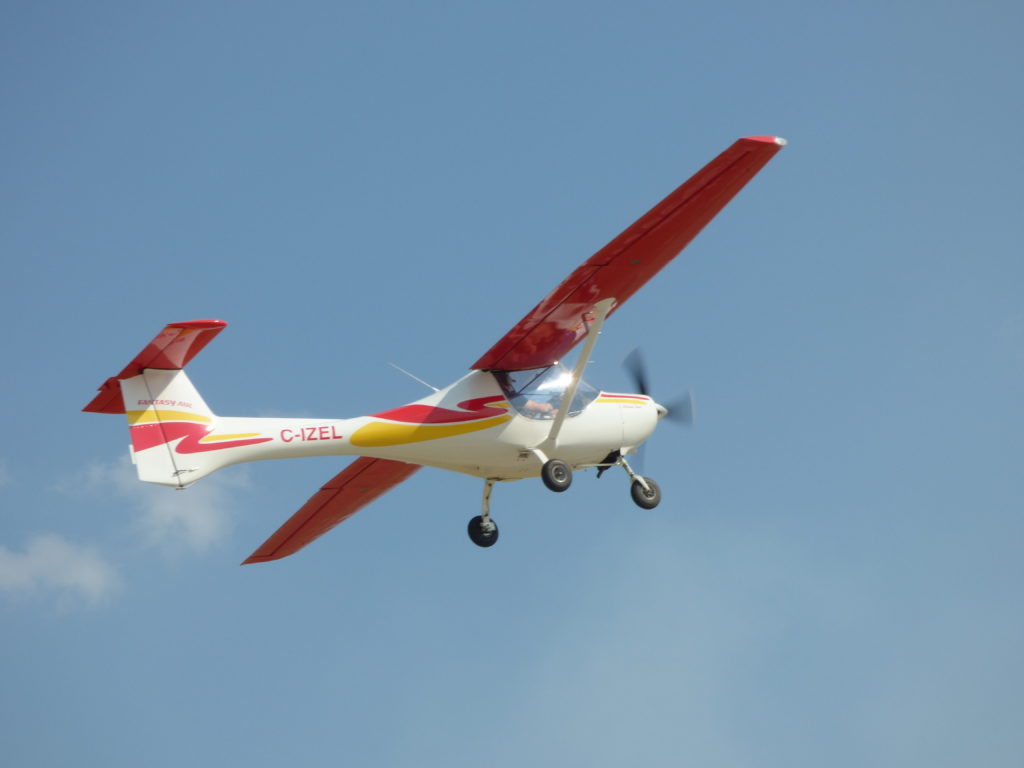
He had established friendships with local First Nations leaders and learned of the many challenges facing Indigenous teens. While he had in mind a flying program for those who might not normally be able to access such opportunities, the bicycle story and the efforts of local leaders to improve the prospects for their youth provided a focus.
“That started to connect the dots,” he said. “Maybe I can help.”
In the summer of 2020, Cordery launched Eagle’s Wings, a flight school with the aim of both teaching teenagers complex skills most would never have imagined they could perform, and helping those students discover something deeper about their own capacity. Learning to pilot an aircraft is the activity, but Eagle’s Wings’ mission is more about developing self-confidence and showing students that they can overcome the inherent fear and anxiety that comes with recovering from a stall or landing under less than perfect conditions.
“What better life skill can you give someone, than to know what they can do in the face of those fears and anxieties?” said Cordery. “To have that experience to look back on in the future and know, ‘I’ve been there, I did it then and I can do this now.’
“If you love to fly, we can help connect the dots for you and help you pursue a career,” he added. “But if in this process you discover you have a passion for nursing, teaching, whatever, know that you can do it. And know that there are people out there who can help.”
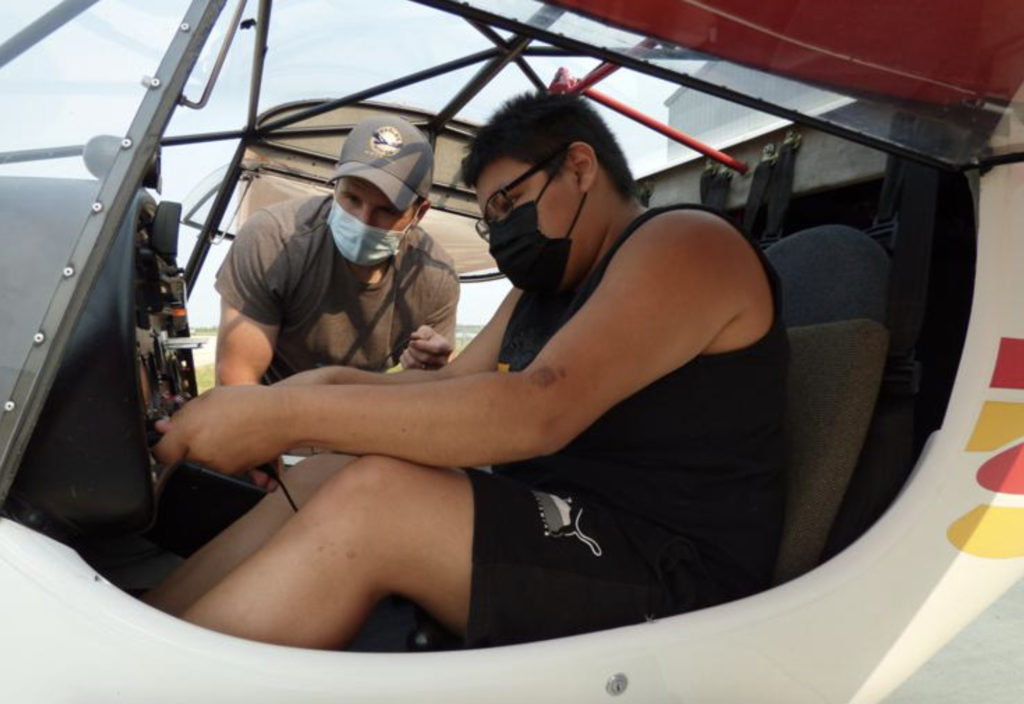
Aerospace is a sizable sector in Manitoba and northwestern Ontario, desperately in need of more pilots and mechanics. For Indigenous youth from fly-in communities that are dependent on aviation for the transport of almost everything, the sector can have special significance.
“There is a lot of opportunity there,” Cordery noted. “You can have a fulfilling career as a pilot or mechanic, or in any of the support industries around aerospace, and still remain close to home and connected to community.”
Whatever students endeavor to do with their newfound confidence, Cordery and his small team promise to be mentors and support the students, whether that is with applying to university, a job, or flight school.
AIRBORNE DESPITE A PANDEMIC
Of all the years to launch a new venture, 2020 was not the easiest. Cordery had appointed a board of directors and held an initial meeting with a partner agency, Dakota Ojibwa Child and Family Services (DOFCS), which would help identify his prospective students. But the spread of the novel coronavirus and the corresponding provincial health measures put everything on pause – including plans to buy an airplane.
A Phase 2 and 3 instructor on the Bell 206 JetRanger and 412 Outlaw with over 1,000 hours of instructional flying at 3 CFFTS, Cordery took his cue from the Air Force, which resumed training after halting most activity in the first months of the pandemic — as well as navigated the various provincial and Canadian Armed Forces protocols to allow students back in classrooms and into cockpits.
“That got me hopeful that we could do this,” he said. For teenagers with no in-person instruction or limited group dynamics over the previous months due to a shift to online learning by area schools, the need for social interaction seemed an imperative.
“My mindset went to: ‘We’ve got to try and find a way to do this.’”
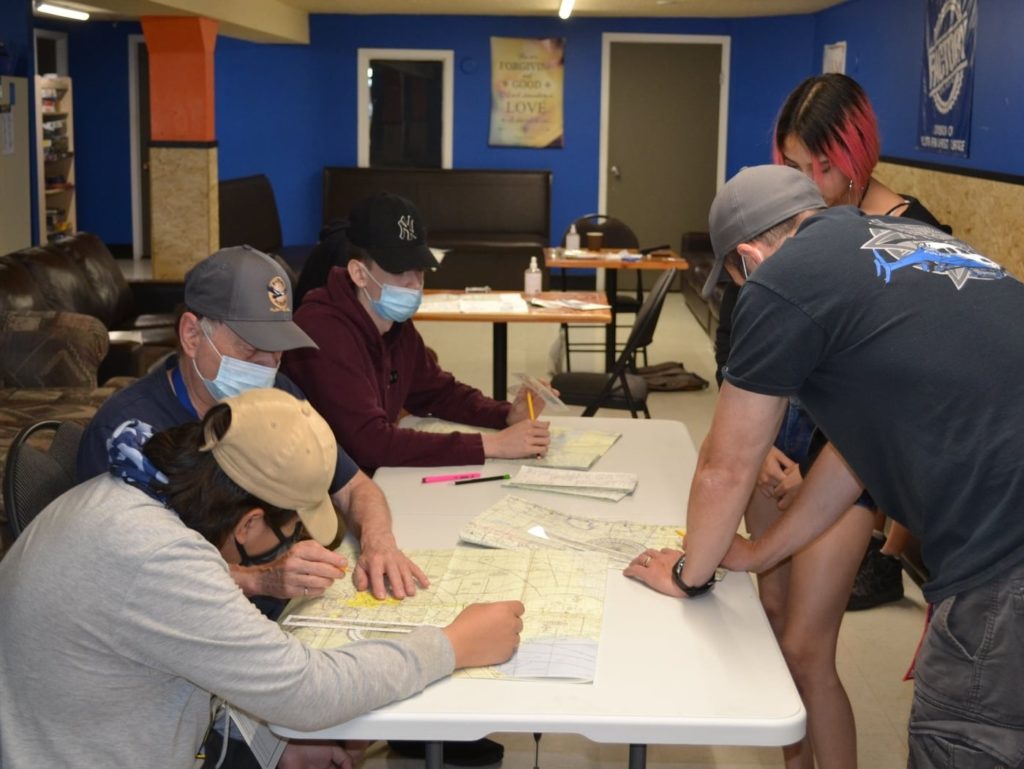
First, Cordery acquired an Allegro 2000, a 2006 Czech Republic-built advanced ultralight fibreglass aircraft with a Rotax engine that had accumulated its initial flying hours in the U.S. before landing in Manitoba. Lighter than a Cessna 152, the Allegro features similar basic instrumentation and flight controls.
“It flies straight and true, but it is light, so it is challenging in the Prairie winds,” he said. “I tell students, ‘If you can fly this one, and you want to pursue flying, a [Cessna] 172 with another 1,000-plus pounds will be fairly simple.’”
That summer, with support from local businesses and key players in the provincial aerospace sector, a team of volunteers collaborated to deliver the first class to six students, between the ages of 14 and 18. Following three days of ground school, Cordery and a fellow instructor from KF Aerospace, Ken Baker, began airborne lessons with five students per day for about two weeks, or 12 flight hours per student. (In 2021, they added a third instructor and conducted six training flights per day, but reduced the total flying time to 10 hours per student, as well as shifted some of the ground school to online sessions. For 2022, the total in-person commitment will be reduced to 12 days, with an extra ground school session online.)
“The students that loved it would have flown all summer, but for those who weren’t necessarily sure the cockpit was the place for them, those 12 hours over the two full weeks became a bit of a grind,” Cordery explained. “We could see their energy levels diminish. We shortened it a bit this year, but we still do all the basic air work: take offs, landings, all the upper flying work, stalls.”
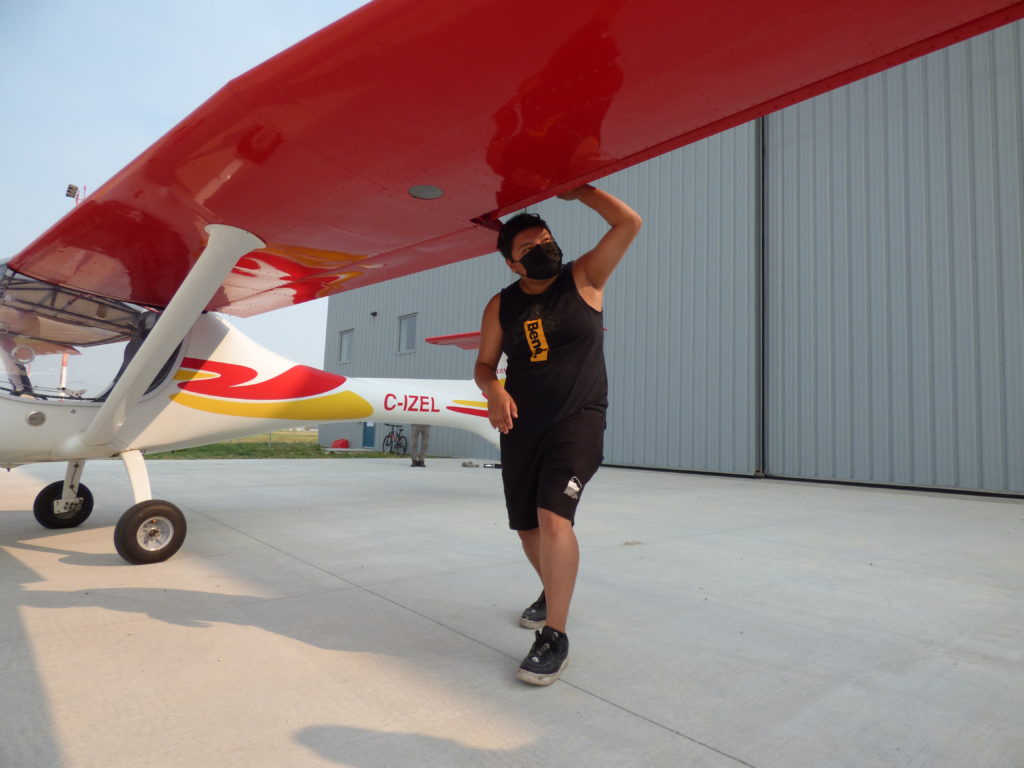
Students also complete a cross-country planning exercise and, as part of their final flight, fly over their home community or over downtown Winnipeg.
The program provides a window to opportunities in the aerospace sector as well. During the online portion, pilots and air maintenance technicians from local companies have shared their stories and what they love about their job. More importantly for Indigenous youth, Eagle’s Wings offers students a connection with their culture. DOCFS leads sessions on treaty structure, traditional medicine, and ceremony with the help of community Elders.
“When we talk about self-confidence, there is a level of identity formation,” said Cordery. “To have Elders come in and speak to that from a cultural perspective was critical. We will never shorten that portion of our program. That will always be a mainstay.”
CONQUERING FEAR
The students are identified and sponsored in large part by DOCFS, which serves eight First Nations communities across southern Manitoba. In addition to a mix of ages and equal gender representation, Eagle’s Wings strives for a balance of Dakota and Ojibway young people among the group.
Though interest in aviation is a factor in the selection process, Cordery listens intently during each interview for admissions of anxiety about flying and desire to try something new and test oneself. He shared the story of one 17-year-old girl who would begin to panic each time she set up an approach or responded to a stall. On one stall recovery, he could see the nose and wing were about to drop and assured her she could do it. “In the moment that it occurred, she let out a scream and then within an instant immediately applied the correct recovery actions, and we flew out of it beautifully. She was pretty impressed with herself that she was able to do it in the face of paralyzing fear.”

Shortly after the course, another student, who was quite candid about her anxiety in the initial interview, decided that since she knew how to fly, she should get her driver’s license. She then also applied for and landed her first full-time job, with a reference from Eagle’s Wings.
Cordery has also seen students “come out of their shells” and embrace flying. A couple of the students, though still in high school, are adamant about learning to fly, one of whom is spending time on Flight Sim on Xbox and has contacted a local flight school. Cordery has supported the process and will continue to try and get them a flying time with Eagle’s Wings.
Thanks to social media, particularly Facebook, awareness of the program has spread across the province. Eagle’s Wings recently received charitable status and would like to find additional funding partners to open the school to more students. Cordery has a limited window each summer to deliver the training, drawing on five days of RCAF community relations leave and his own vacation time, but another instructor and a second plane would allow between 10 and 12 students per year.
A second plane, however, would be a big step as the program relies on volunteers to help with the maintenance.
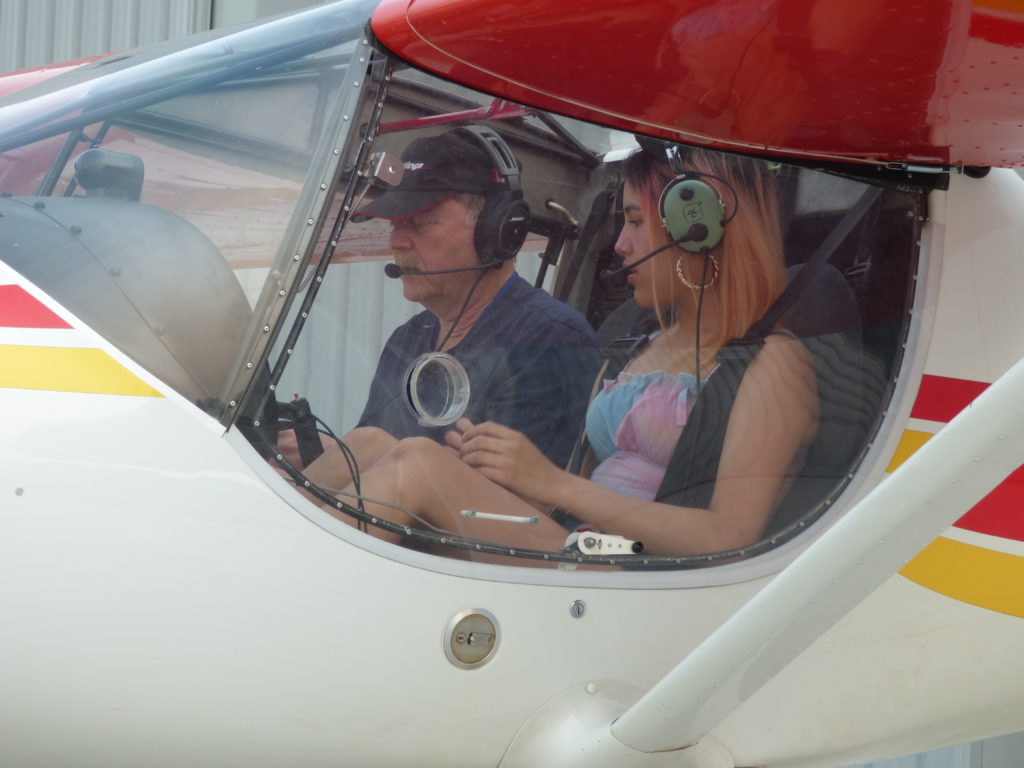
“At some point, I would love to start a build-a-plane program for youth,” Cordery said. “Down the road, we may buy a kit plane and then, with the help of some volunteers, set up weekly sessions throughout the year to work with small groups of students to build a plane.”
Cordery, now in his 16th year with the Air Force, recently received a RCAF Commander’s Commendation for his work with the program. Though he admitted he misses aspects of operational flying, “I’m really enjoying having an impact on Air Force students at this stage of their career. It was always a career goal of mine to come back to Portage la Prairie and instruct, and it was the right time for myself and family. I love the job.”
“Teaching to fly is a passion of mine, and to have Eagle’s Wings materialize through all this has been amazing. Reaching students that in my normal career path I would never see has been truly rewarding.”








